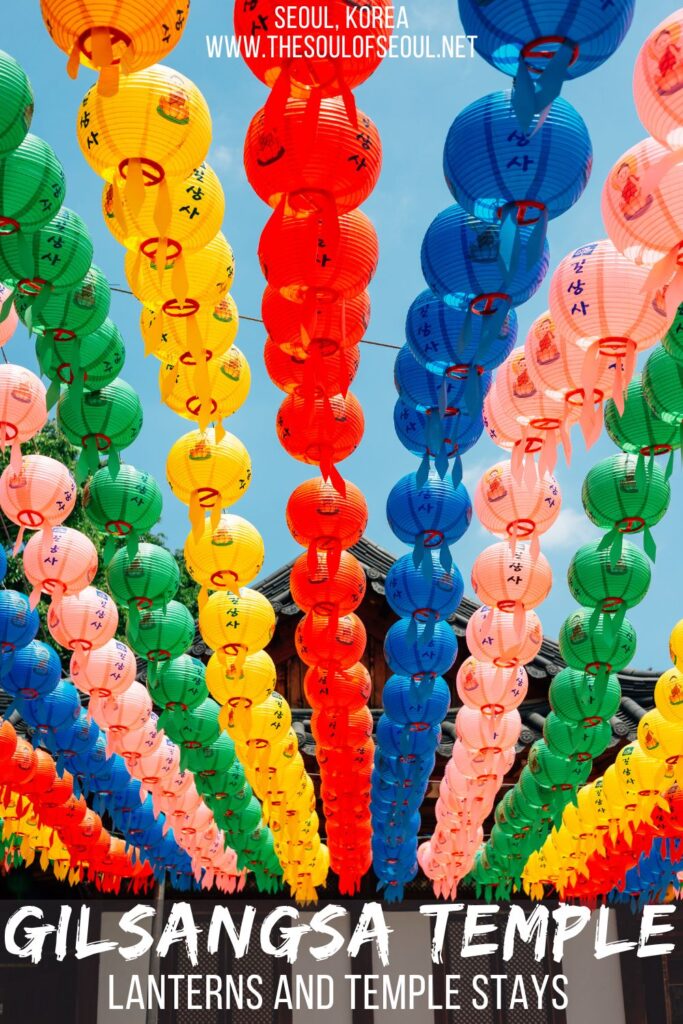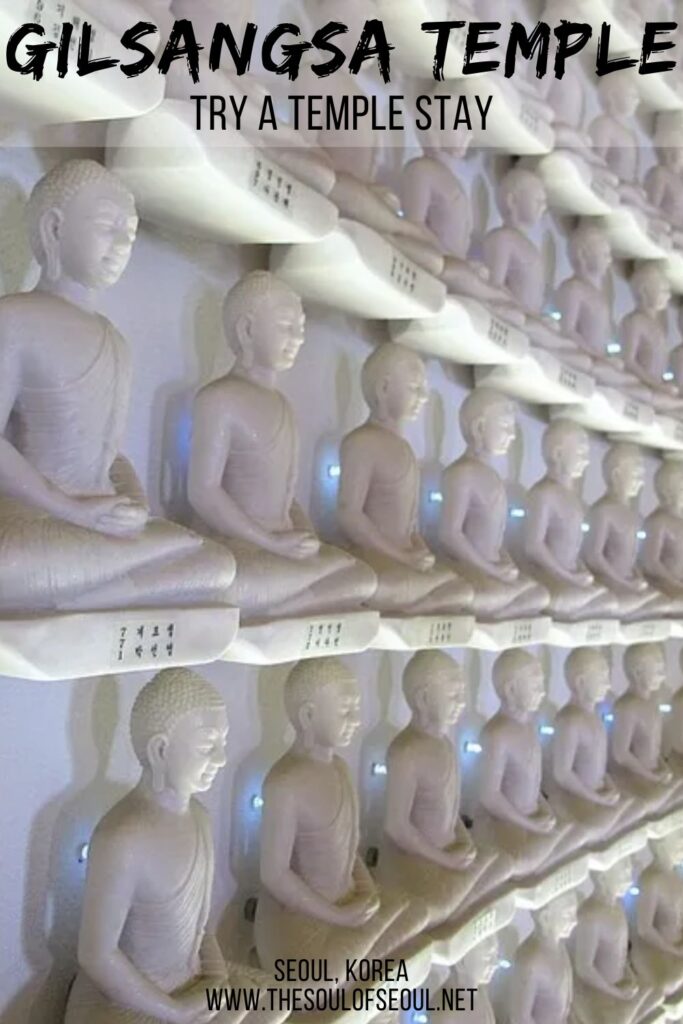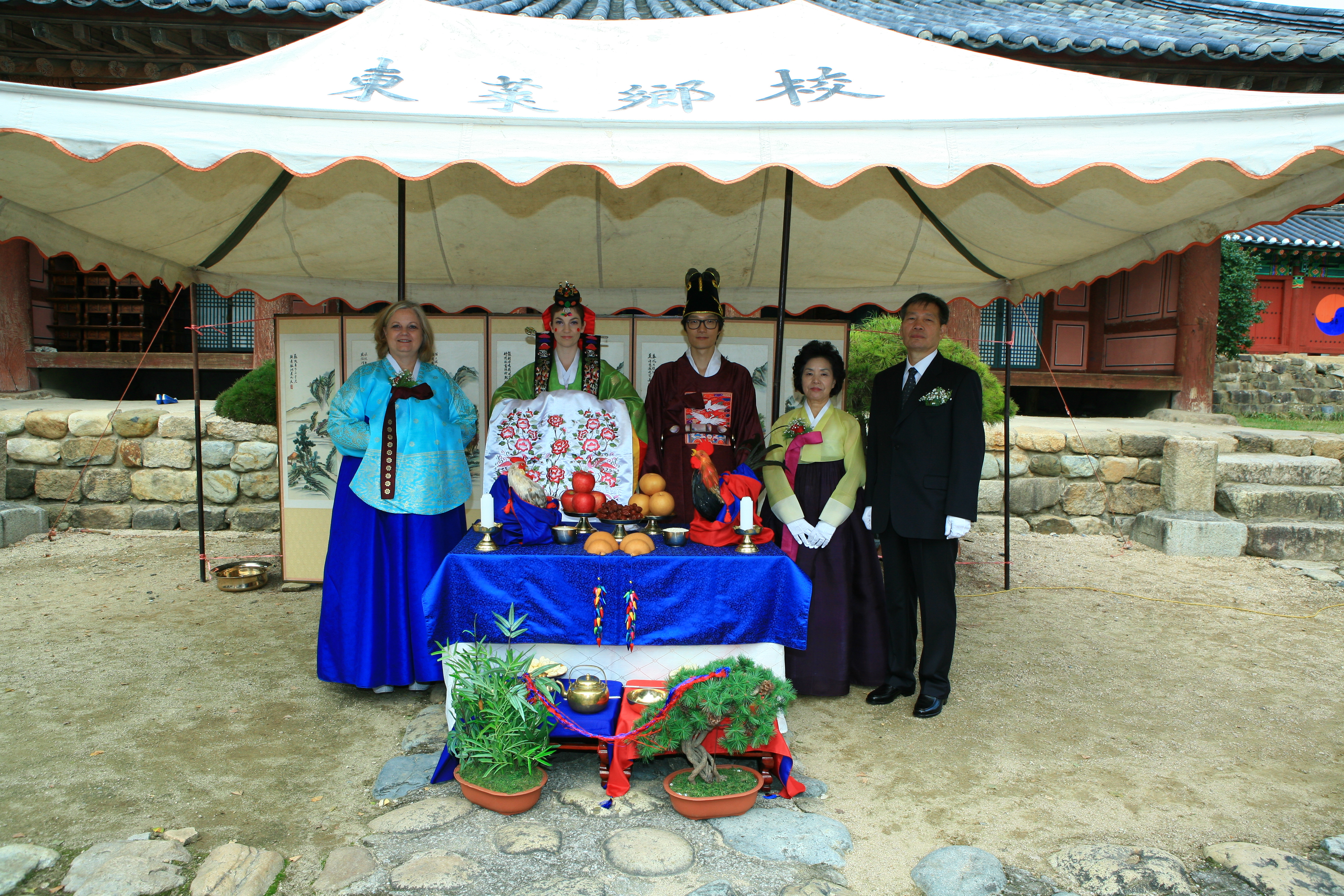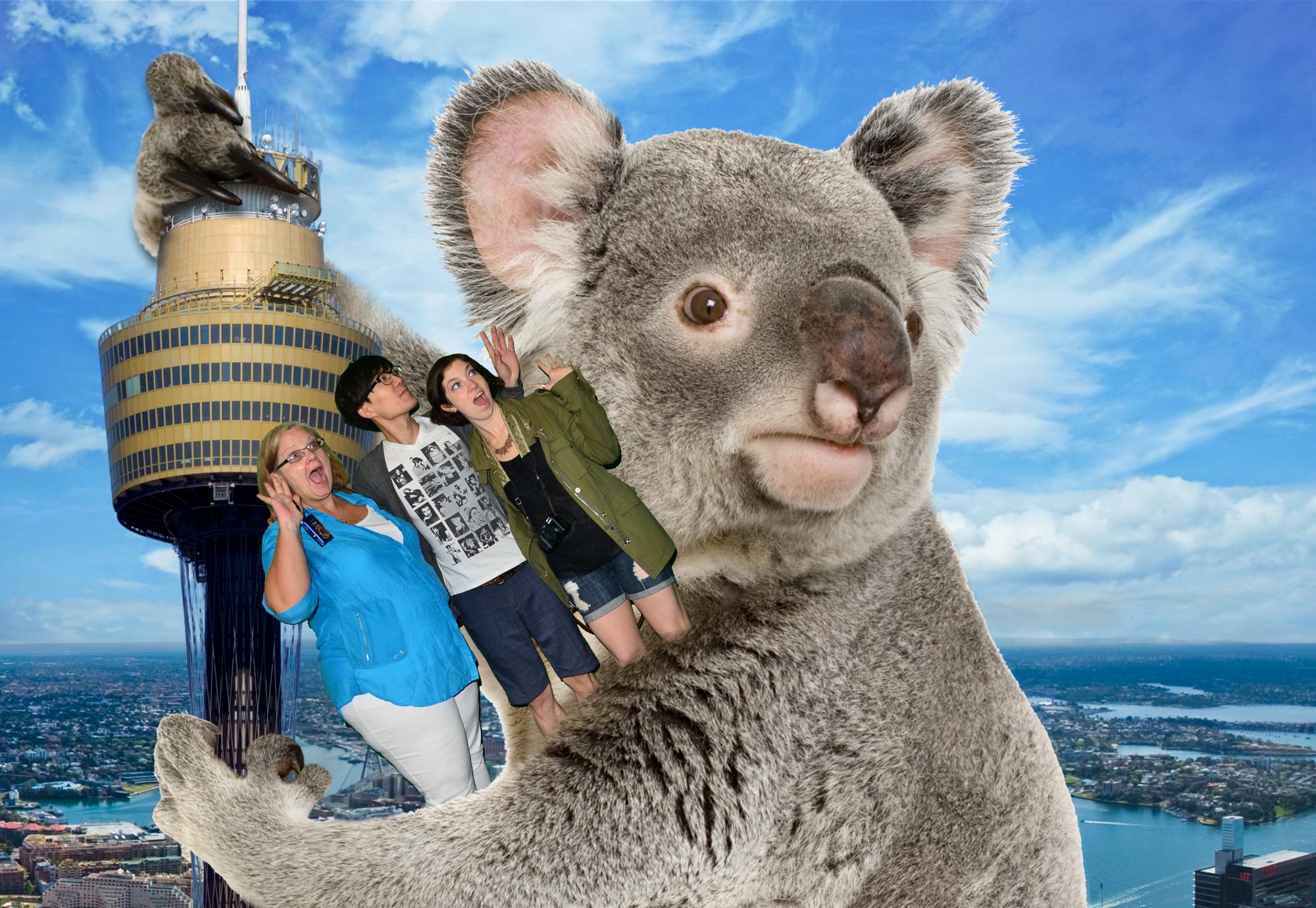Gilsangsa Temple: Where to Temple Stay in Seoul
Gilsangsa Temple, located on the southern side of Mt. Samgaksan in northern Seoul, Korea, may not be the oldest Buddhist temple in Seoul, only just registered in 1995, but it offers some great programs for those wishing to learn more about Korean Buddhism.
Visit in the spring for some gorgeous views with colorful lanterns in celebration of Buddha’s birthday strung across the courtyards and lining the roads. Or if you’re wondering where you can temple stay in Seoul, this is the place.
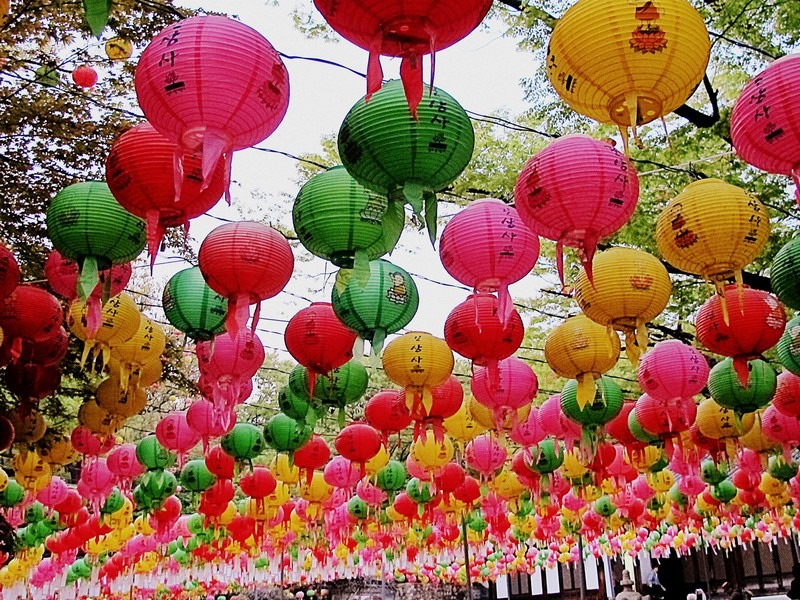
Learn more about visiting Gilsangsa Temple:
(This post contains affiliate links, which means I receive a certain percentage of a sale if you purchase after clicking at no cost to you. Thank you for your support.)
How To Get There
Address: 323 Seongbuk-dong Seongbuk-gu, Seoul (서울특별시 성북구 성북동 323)
Directions: Hanseong University Station, Exit 6. Walk straight 50 minutes and there is a small etched sign in front of Dongwon Mart for a shuttle bus up to the temple. Departs: 8:30/ 9:20/ 9:40/ 10:00/ 12:00/ 13:00/ 15:00/ 16:30.
What To See
The buildings in the temple complex were originally a part of a restaurant called Daewongak owned by Kim Yeong-han, but were donated to Monk Beopjeong Sunim and became a branch of Songgwangsa of the Jogye Order on June 13, 1995.

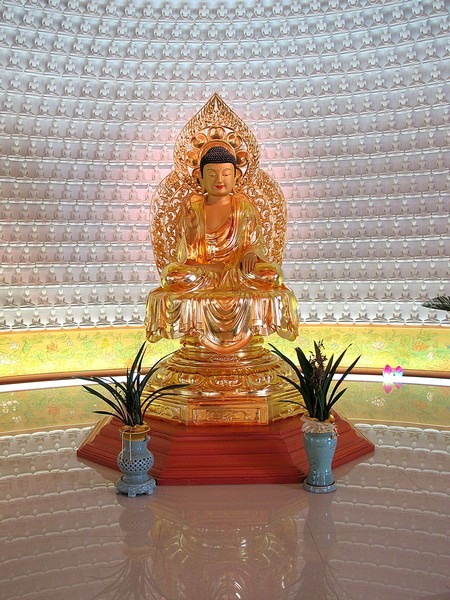

Kim Yeong-han was very moved after reading Monk Beopjeong Sunim’s essay “Musoyu” (Non-Possession) and spent ten years convincing him to take her restaurant and turn it into a temple. The only thing she received in return was her Buddhist name, Gilsangwha, and a Buddhist rosary. She remarked that the only thing that she wished for “was that the temple would become an open space where all who came could forget the pains of life.”
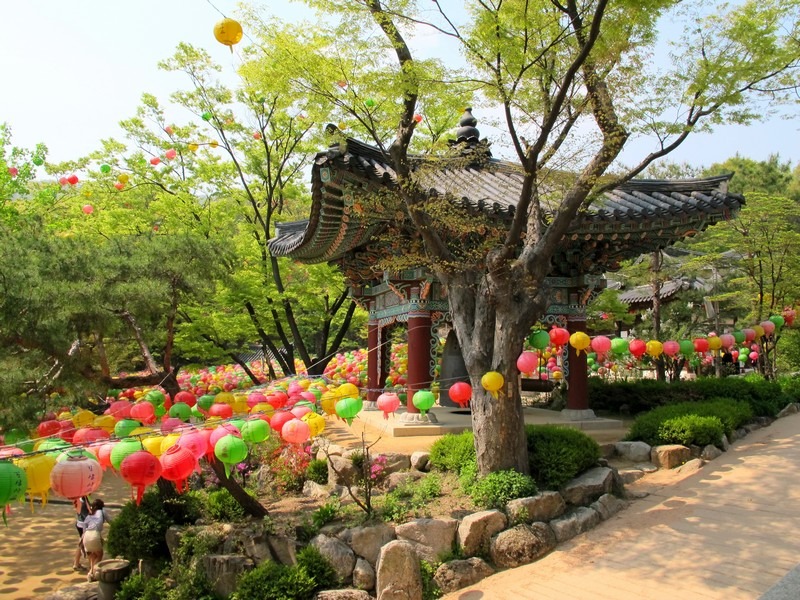
The first thing one sees when entering the complex is Iljumun, the front gate that welcomes all to enter. Once inside, there are steps that lead up to Geungnakjeon, the main hall inside which is a statue of Amitabha Buddha, the Buddha of Infinite Light and it really is beautiful to behold.
Instead of going up the steps, there is also a slope that leads up to the right from the gate that leads to Seolbeopjeon. Inside is a statue of Shakyamuni and behind the statue are 1000 seated statues of Buddha. This building is where those hoping to participate in a temple stay meditate, prostrate and sleep. Can you imagine sleeping just beneath this beautiful alter area?

Following the path up behind the main hall from Seolbeopjeon leads past the living quarters and meditation buildings used by the monks that live on site. There are signs along the way requesting that those visiting remain quiet so that the monks can maintain their studies. This temple operates a Buddhist college, as well as a Zen meditation center and the volunteer group Malgo Hyanggiropgae (Clean and Fragrant) also work out of here. In keeping with the original mission of the owner, the temple is providing something for the community and the community finds comfort in the temple.

Wonder what all of the colors on a Korean Buddhist temple are for? Wonder what they symbolize? Learn more about dancheong before you go so you can really appreciate everything that you’re seeing at Gilsangsa Temple. You’ll see similar decorations at Buddhist temples all around Korea.

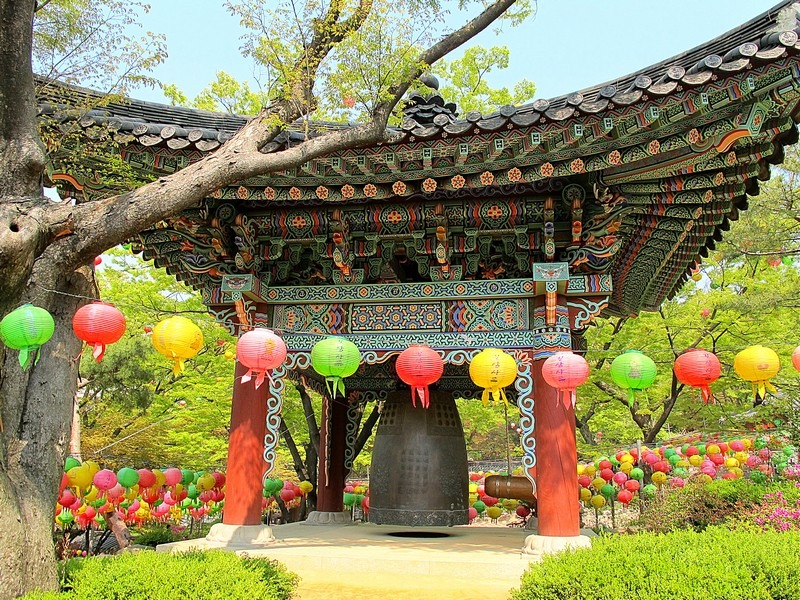
This temple wouldn’t make it onto a list of must-see places if I were to have a friend visiting for just a few days, but the temple stay programs and the Dharma talks every week as well as the Buddhist classes they provide for beginners would all be great reasons to search this temple out for people interested in learning more about Korean Buddhism. This temple is beautiful and not far from the popular Ihwa Mural Neighborhood in Hyehwa. You could visit both in one day or spend some ample time up at the beautiful Gilsangsa Temple and hiking around the paths in the mountains nearby.

Temple Stay Experience
I recently got to take part in one of the temple stay programs here as part of my volunteer program for the amazing Lotus Lantern Festival held in Seoul each year in celebration of Buddha’s birthday. Along with about 70 other people in the group, half Korean and half foreigners, we were invited to head to Gilsangsa Temple to learn Buddhist temple etiquette, Buddhist dancing, how to eat a formal monastic meal and how to successfully prostrate and meditate.
As soon as we arrived, we were directed into a changing room to don more temple appropriate apparel. We were given pants and a shirt and as soon as I put my pants on, I wondered if I’d put them on backwards. Amusingly, so did every other girl in the room. We all compared and decided it didn’t really matter. After that we headed up to the main hall to stow our bags and find a seat on one of the provided mats.
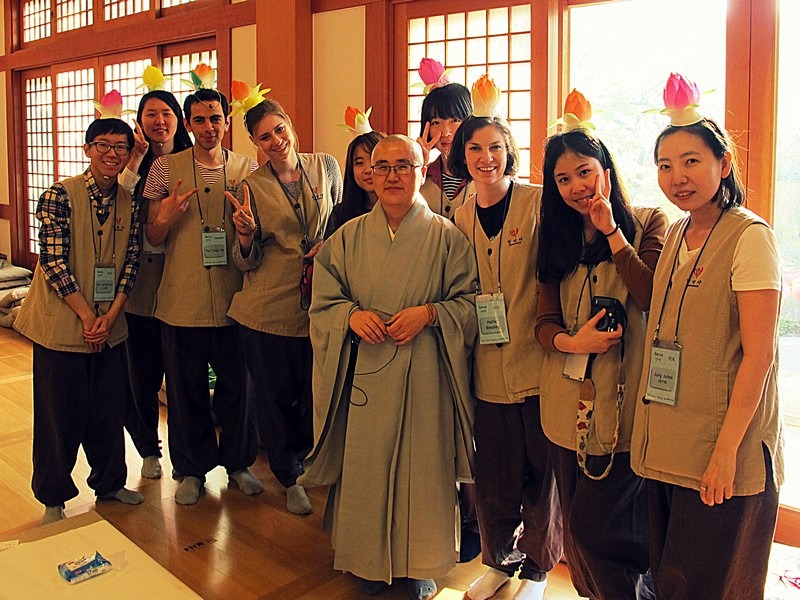
The first lesson was all about Buddhist temple etiquette. I had learned from my mother-in-law that I was not to walk up the center steps on temple grounds, as those are only to be used by the monks, but rather walk on one of the two paths usually flanking the center path at a temple. This was also covered here. Next they explained how to appropriately greet monks and bow and prostrate after entering a temple. Prostrations are done either once, three times, or 108 times. How many times would you want to bow?
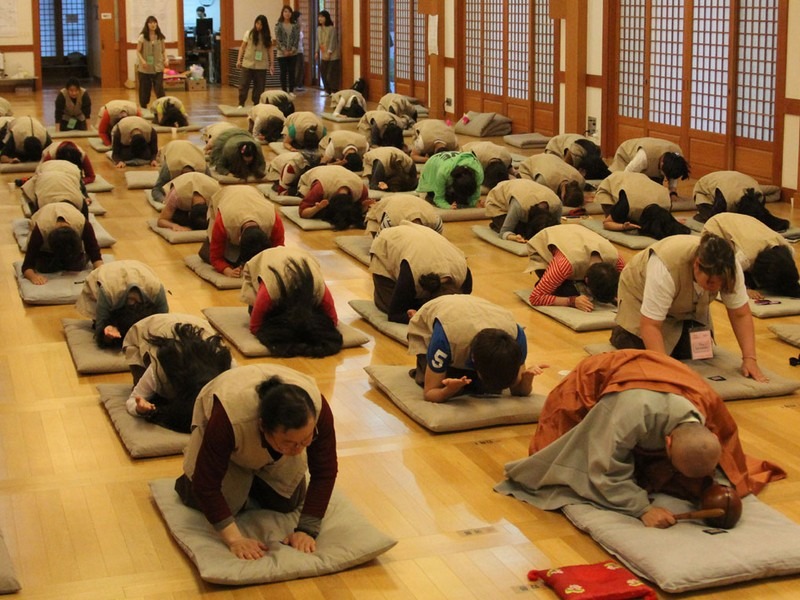
We did sets of three generally, however in one chant we did quite a few sets of three, so we may have ended up with 108 by the end. I had wondered about this number before. My mother-in-law once called and told me that she had gone to temple and done 108 bows for me and I wasn’t really sure what I was supposed to say in response. “Thank you,” just didn’t seem quite right, and telling her not to put herself out didn’t really seem to suit the situation either.
After taking part myself and talking to the monks, it seems 108 prostrations can easily be done in about 15 minutes. The etiquette lesson was very appealing to me. I enjoyed learning the customs and I also think my mother-in-law will be pleasantly surprised the next time we visit a temple together.
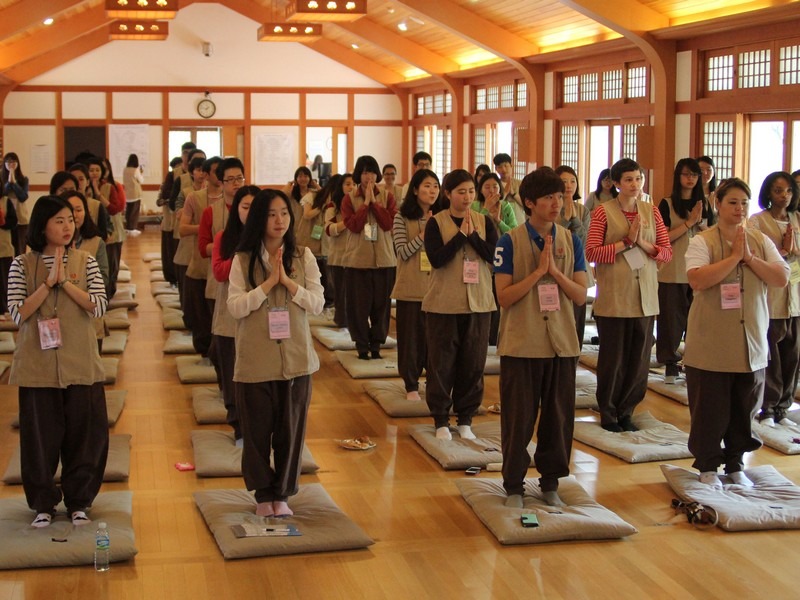
By the time we had finished, it was around 5:30 and everyone was pretty hungry. We were directed into four long lines on the floor, two lines facing each other. Monk Ja-oo began her explanation. First off, there are four bowls, one large and then one inside of that and another inside of that and the final smallest one inside of that one. She explained that the largest goes in front of our left knee, the next largest one goes in front of our right knee, the third goes behind the one in front of the right knee and the smallest one goes behind the largest one in front of the left knee. This set up was also to be done with everyone and everything completely silent. Most people seemed to have a difficult time with this silent part.
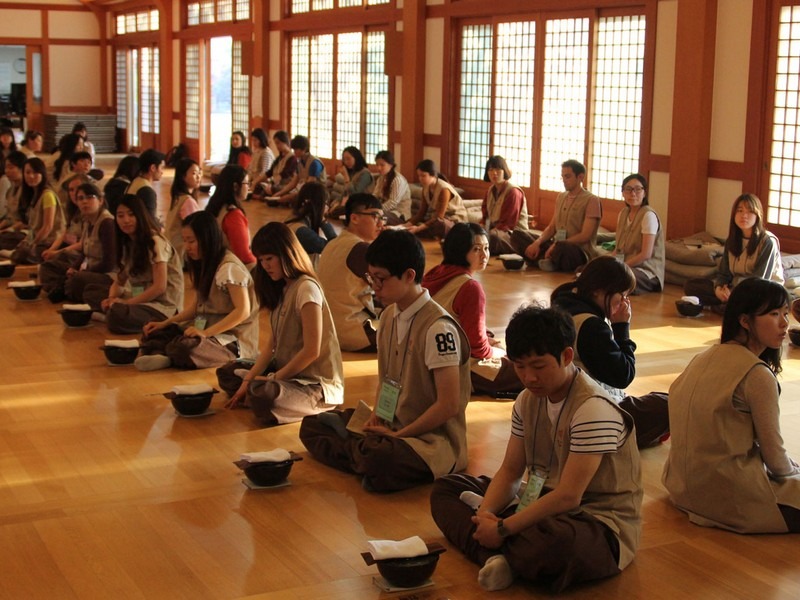
No one was talking, but bowls just hitting the floor made a sound and Monk Ja-oo mentioned that we should try to notice this and cease. Next, water was poured into the largest bowl and swished around to clean the bowl and then swished in the subsequent bowls to clean them as well before finally being put in the third largest bowl to remain for the meal.
The food was then served and upon receiving the food we were to bring the bowl up to our forehead to accept this food. The rice went in the largest bowl, the soup into the next largest and side dishes in the smallest bowl. After Monk Ja-oo gave thanks we were allowed to eat our food while still remaining silent. The silence is so that we can remember how thankful we are for the food, each and every bite, and thank Buddha for providing for us.


After we finished every morsel in the bowls, except for one lone radish, some more water was brought around. The water was poured into the biggest bowl, and we used the radish to clean the bowl, that water was then poured into the soup bowl and finally into the side dishes bowl. The radish was to be eaten and that water that we’d used to wash the bowls was to be drunk.
Monks usually have their own set of bowls and utensils and this is how they clean everything without wasting a drop. They don’t even waste the water to clean the bowls. The food was delicious, as is most temple food so I’ve heard, and following that we took part in an evening service before being taken outside to enjoy the lighting of the lanterns. The night sky all around the temple and up into the trees was lit with a rainbow of color and all of the teams went around getting pictures to remember the day together.
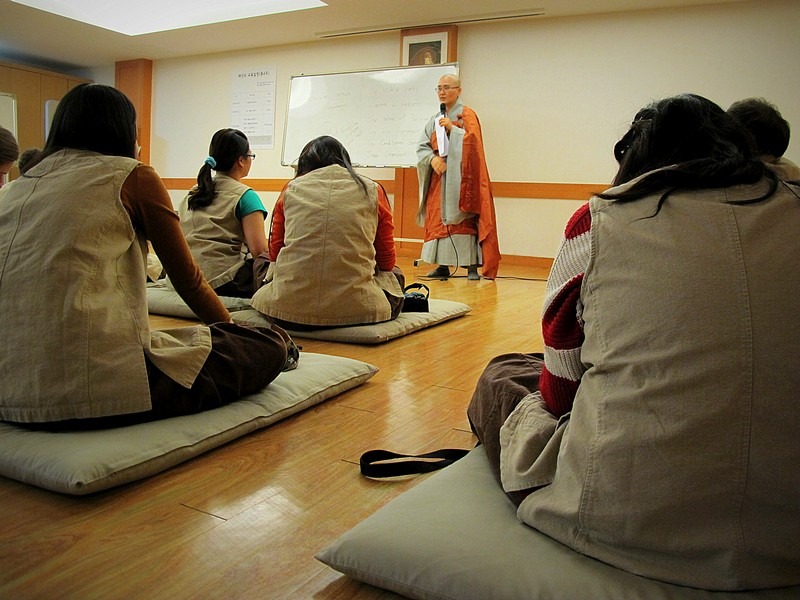
After everyone had their fill of lanterns and photos, we were directed inside and were split into two groups, the foreigners and the Koreans, to learn more about Buddhism. Monk Ja-oo went over as much information as she could in an hour and a half and I think really enlightened some people. She has been helping us throughout our classes for the past month and a half to learn more and I’ve been so thankful to have met her. I’m sure most monks are open and honest and helpful, but I’m glad we have been able to have her as our teacher. After that it was bedtime. We would get five hours of sleep, as we had to be awake at 3:30 for morning service, prostrations and meditation.
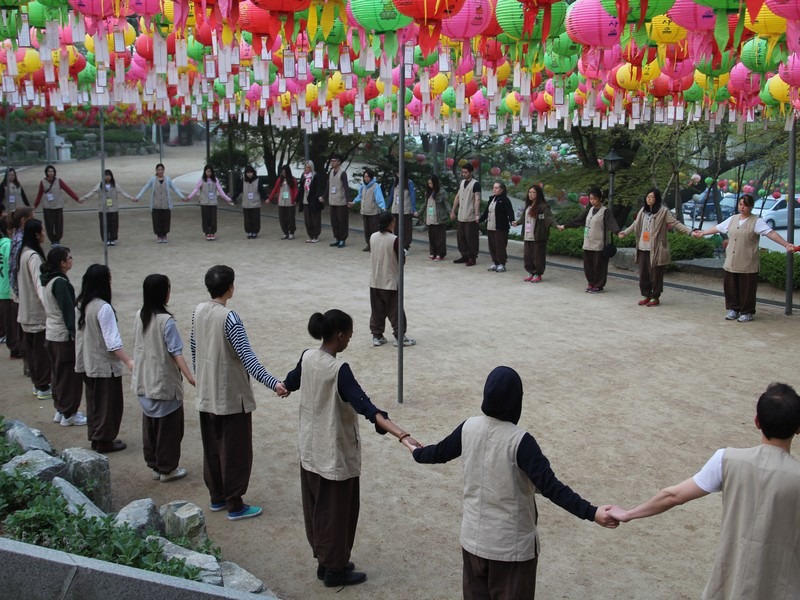
I thought waking up at 3AM would be painful, but it really wasn’t. Yes, I completely passed out when I got home later in the day, but at 3 in the morning, I was fine. I’m still not quite sure how monks only get 5 hours of sleep a night and manage to be happy or just awake at all the whole day. We listened to the early morning drums beating and the bells ringing and chanted before taking part in a seated meditation for thirty minutes. After that, we took part in a walking meditation in which we were to walk very slowly and deliberately.
We followed the leader ahead of us in a circle and then we were taken outside to walk around the temple area, continuing to be extremely slow and measured. I didn’t realize it at the time, but later in the evening when I was home my calves were sore and I couldn’t figure out why until I thought about how each step was so carefully thought of and maneuvered that it had really been a mental and physical work-out. It was a very calming experience.
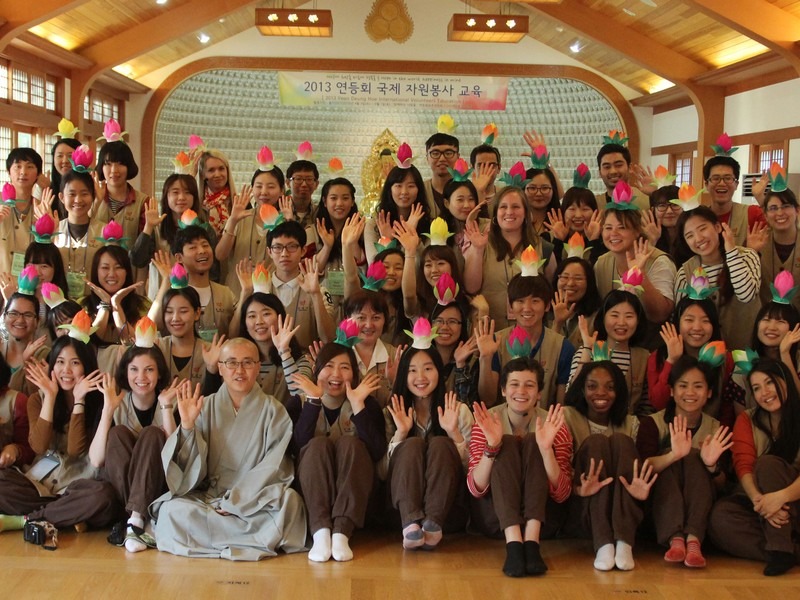
By then it was 6 and it was time for breakfast. Everyone ate up quickly and we enjoyed some break time with our teams. We had been told the night before that we weren’t to talk when we woke up and weren’t to talk until after we’d eaten breakfast, so from 3AM until 6AM there was a silence that fell over us. It was a strange and peaceful situation. There were more than seventy people in the space and yet it was silent. Of course, as soon as breakfast was over it was clear to see that most people had one thing or another to comment on, but the three hours of silence was a welcome respite in a city with so many people. Surrounded, yet silent.
We had one more lesson to help us prepare for the festival and finally the head monk of the complex took us on a tour of the site. It was a really great experience and I’m glad I got to do it with this group of people. It’s easy enough to sign up for a temple stay and go with a friend here, but it was a completely different experience, I think, being with 70 people that I’ve been studying with and getting to know for a couple months now. I’m happy to have had this opportunity and I hope that perhaps I can do this again.
Did you like this post? Pin It!
